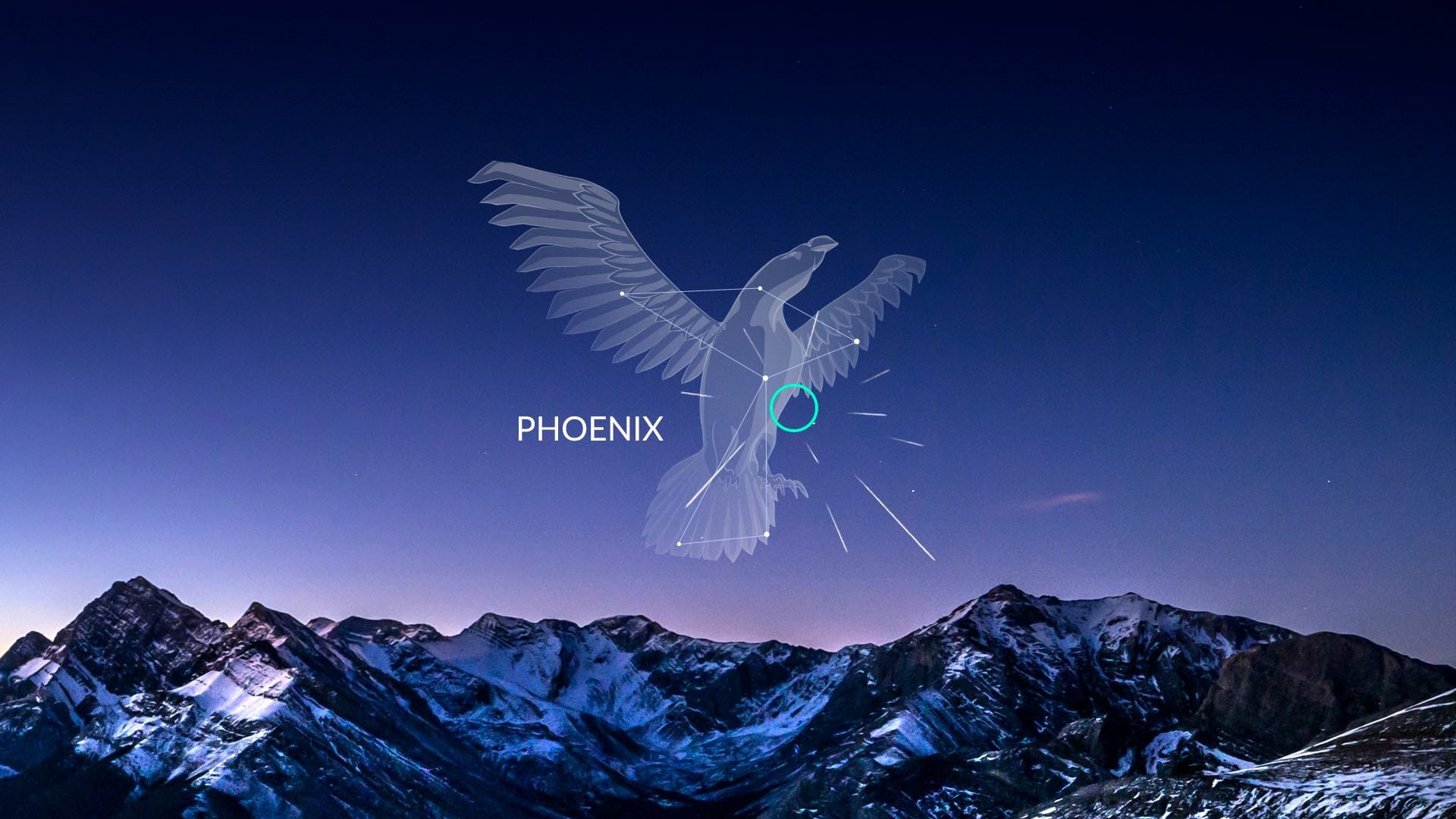Phoenicids 2025: A Small Stream With Big Potential
A minor Southern Hemisphere meteor shower, the Phoenicids, will peak on December 1, 2025. This stream is known for unexpected outbursts, but in most years it stays quiet. In 2025, a bright waxing gibbous Moon will wash out many meteors, so conditions won’t be great. Still, if you’re up for a challenge, read on for when and where to look — and use the Sky Tonight app to time your viewing window.
Contents
- Phoenicids 2025: When and where to see
- What causes the Phoenicids?
- The Phoenicid outburst of 1956
- Phoenicids 2025: Bottom line
Phoenicids 2025: When and where to see
- Active: December 1 – December 5
- Peak of activity: December 1
- Meteors/hour: Variable
- Moon illumination: 86%
- Radiant location: Phoenix
- Parent body: Comet 289P/Blanpain
- Best visible from: Southern Hemisphere
- Description: The Phoenicids are a minor shower with an unpredictable rate. Most years, they produce only a few meteors per hour, but they’ve surprised observers with short-lived outbursts in the past.
Phoenicids 2025: Visibility forecast
In 2025, the Phoenicids peak just three days before the Full Moon, so the brightly lit sky will be a significant problem. Your best bet is the darkest part of the night when the Moon is lowest or already below the horizon — at about 2-3 a.m. local time on December 2 in the Southern Hemisphere.
To improve your chances of seeing shooting stars, try to observe from a spot where the Moon is blocked by a building, hill, or tree, and give your eyes at least 20–30 minutes to adapt to the dark.
Where can I see the Phoenicids?

The radiant of the Phoenicids lies in the southern constellation Phoenix, so this meteor stream strongly favors the Southern Hemisphere. There, Phoenix rises highest in the sky in the evening, giving observers an excellent chance to spot the Phoenicid meteors. From the Northern Hemisphere, conditions are mostly unfavorable because Phoenix remains very low near the horizon — or doesn’t rise at all from many locations.
Remember: you don’t need to stare at the radiant to see shooting stars — they can flash anywhere in the sky. However, the higher the radiant is in the sky, the more meteors you’re likely to catch. To learn where the radiant is at a particular moment in time, use the Sky Tonight app.
For beginner-friendly meteor viewing advice, check out our infographic.

What causes the Phoenicids?
Meteor showers form when Earth crosses a trail of debris left by a comet or asteroid. The Phoenicids come from dust shed by the small periodic comet 289P/Blanpain. Discovered in 1819, it was soon lost and given the designation D/1819 W1 (“D” here meaning “disappeared” or “dead”).
In 2003, astronomers noticed that a newly found near-Earth object, asteroid 2003 WY25, followed an orbit that closely matched the lost comet’s path. In 2005, observations revealed a faint coma, suggesting it wasn’t an asteroid but a comet — or a fragment of it.
The assumption was confirmed in 2013, when the Pan-STARRS survey observed the object undergoing a strong outburst. Almost two centuries after it was lost, the comet was rediscovered and officially named 289P/Blanpain.
Want to spot a comet yourself? Check our guide to upcoming comets to see what’s next in the sky.
The Phoenicid outburst of 1956
The Phoenicids entered astronomy in a dramatic fashion. In early December 1956, observers in places like New Zealand, Australia, South Africa, and aboard ships in the Indian Ocean reported a sudden surge of meteors — roughly 100 meteors per hour! This outburst was the event that revealed the shower’s existence, and it remains the Phoenicids’ most famous appearance.
Since then, the Phoenicids have usually been quiet, producing low numbers of meteors. Astronomers still don’t know whether the shower follows a regular cycle, so another surprise outburst can occur at any time.
Phoenicids 2025: Bottom line
The Phoenicids, a minor southern meteor stream, peak on December 1, 2025. This year, a bright waxing Moon will make observing difficult, so expect low visible rates — unless the shower produces an unexpected outburst. Try to block the Moon’s light with a tree or building to see more meteors.
Use the Sky Tonight app to set a reminder so you don’t miss the peak. If you want to brush up on meteor-spotting skills, try our short quiz about shooting stars.

